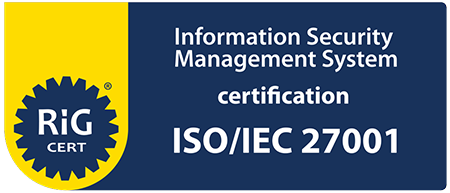Focused on finding the right fit for the job, sometimes companies forget first impressions go both ways. Your goal should be to give new employees the information and tools they need to do their job well but also make them feel supported and valued.
In this article, we dive into the optimal strategies for a smooth onboarding experience, whether it’s happening in person or remotely.
Effective Onboarding Practices
Incorporate the following practices into your Onboarding Program and avoid issues down the line!
Tailor the onboarding program to each employee’s background
Not all new employees are equal — they have different backgrounds, education levels, and experience. All of that mandates a different onboarding program, with mentors and training to match the specific persons’ needs and abilities.
Assign each new employee a mentor
One mentor per new employee is a time-tested approach. For new leaders, appoint them with a cultural “interpreter” to help them navigate the company culture.
Give new hires the most important information in bite-sized pieces before they start work
Starting a new job comes with a steep learning curve. To mitigate the challenges, give important information in bite-sized pieces before the start date.
Keep evaluating the new employee and ask for feedback often
Use a variety of methods to collect information and data on how your new employee is doing. For example, the Employee Pulse Survey tool makes quick and frequent check-ups easy by providing you with weekly updates on your employees’ well-being.
While technology can help a lot, don’t forget about one-on-one discussions.
Make sure leadership is involved from the start
An executive taking time to meet the new employees communicates they care about them as people, not just as workers. Such displays of care leave a lasting impression and help build a solid foundation for the employees’ relationship with the company.
Onboarding Remote Employees
Provide technology tools before the start date
Make sure new hires have all the tech they need before their start date so their first day can go as smoothly as possible.
Clarify their role and responsibilities within the team
Workers feel a sense of purpose and satisfaction when they know how they fit into their team and exactly what type of value they provide.
Set up realistic responsibilities and goals for them, so that they can approach their work in a structured way and avoid burnout.
Explaining company culture, mission, and values, familiarising them with the products and services offered, and introducing them to the key team leaders is the main ground you need to cover in the introduction.
Tracking how well company values are being adhered to can be a challenge. Keep an eye on employees’ views on the culture within your organization with tracking software such as the Values Indicator.
Nurture a supportive team culture
Introduce the new worker to their team members in a virtual team meeting so everyone can get to know each other. Planning a virtual lunch hour right after onboarding might also help them settle into their role and feel supported.
With remote teams, keeping weekly or biweekly team meetings is key to ensure everyone’s on the same page and relationships are built and maintained.
Plan ongoing training activities.
The onboarding process shouldn’t be the only time employees are trained and supported. Keep planning regular training activities with new hires to make sure they’re fully prepared for their job and build a bond of trust with the team and company.
Good Relationships Have a Solid Foundation
While we hope these tips were helpful, keep in mind that training employees and maintaining your relationships with them is an ongoing process and it’s vital to their success in their role. Customizing your approach to different people is the overall advice you should keep in mind.




